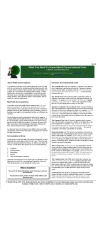Conflict Management And Resolution Series: #2 Stamping Out Blame: What Can Leaders And Managers DO? (Part 2 of 2)
Note: In Part 1, we talked about how important it is to move away from a blaming culture, which is prevalent in our society, to a problem-solving approach. Not only does that create better relationships and a better team atmosphere, but it’s key to improving in the future. In this part, we’ll look at what managers and leaders can do to shift from blaming and finger-pointing to accountability AND improvement.
Whether you are interested in continuous improvement, organizational health, or simply want to undertake a performance management approach more effectively, the issue of blame versus problem solving is critical. Not only can you forge better relationships with staff by focusing on problem-solving rather than blame, but you can also influence the degrees of blame that is shown by staff to other staff, political department heads, and even customers. Your position in the organization places you firmly as a model for appropriate problem-solving, and anti-blaming behavior. If you show blaming behavior. you can be sure that your self will return the favor, often blaming you in turn (often covertly–you will never know). Consider the following suggestions:
1) Words And Phrasing Count!
When problems or issues occur (e.g. lack of performance, failure to keep commitments,etc.), and you feel obligated to intervene, use a problem-solving approach. Begin the process by trying to understand (WITH the employee) the actual problem, and what lies behind it. Knowing, for example that poor performance may be a result of boredom, personal stress, lack of skills or knowledge or other larger systems issues (lack of equipment, authority, etc.) and so on allows you to work with the employee to attack the root problem, to PREVENT it from reoccurring. But one important part to note. Problem-solving does NOT mean looking for excuses for the employees behavior. (that’s the blame game still). The employee is still responsible for the consequences of their actions and future actions, but the focus is on the future. Again, let’s look at two dialogues:
Manager:John, you should have notified me that this work wasn’t going to be ready for the meeting. We all looked stupid in front of the boss, and it’s going to take us days to recover.
John:I tried to tell you but you were on vacation, and I forgot. You are very hard to get hold of, you know.
Manager:You could have called me at home.
John:I didn’t want to bother you with it, since you said not to call unless it was an emergency.
Can you guess where this conversation will go? Already you see that the initial statement, rather than trying to uncover the cause of the problem, focused on the past, on what should have been done, and activated the defense of the employee. So, in fact one person is “attacking” in a subtle way while the other is defending. If this continued, and someone didn’t give up, both would end up attacking. Contrast this with:
Manager:John, I was expecting to have the brief from you before my meeting. We need to figure out what happened and how to make sure that it doesn’t happen again. Was I not clear on the date, or was there some other thing that popped up that caused us to miss the deadline?
John:Well, I might have misunderstood about the urgency, and when you went on vacation, I didn’t want to bother you at home.
Manager:OK, well, how does this sound. If I need something on an urgent basis I’ll make sure that I tell you in future. I can also let people know when it is OK to call me at home, so it will be easier. I am also going to ask you to please keep me informed, though on projects like this so we won’t be embarrassed again. Does that make sense?
John:Sure…I have a few more suggestions that might help.
If you compare the dialogues you can almost “feel” the difference. The first sounds blaming, emotional and past oriented. The second is neutral, aims to figure out where the problem lies and works to prevent reoccurrence. Of course, problem-solving dialogues don’t always go this smoothly, and this example is probably over-simplified. It may be necessary to delve further into root causes than is shown above.
2) DEMAND Accountability, Looking Forward, and Move Staff From Complaining To Generating Solutions
As a manager your role extends beyond your direct interactions with a single employee, but includes modelling problem-solving in everything you do, particularly at staff meetings and other gatherings. Not only do you use problem-solving but you “steer” blaming conversations back to problem-solving and back to prevention. Employees may attempt to blame one another, or blame some “shadowy they” for difficulties. Your job is to quickly turn the conversation back to “What can we do, then, in future?” Expect and insist on staff taking responsibility not just for identifying problems (often in the form of complaints), but for suggesting workable, positive and constructive solutions to those problems. When you start doing this you begin to create a “blameless culture”, and a “responsible culture” that discourages empty complaints, “bitching” and personal vendettas that will put you in the middle of other people’s disputes.
3) Use Any Performance Appraisals And Discussions To Look To The Future
Most organizations use performance reviews to look backwards. While one can learn some thing from looking at the past, it’s important to spend more time looking at how to improve things in the future. Performance appraisal discussions are useless unless they result in better performance (regardless of whether employees are top performers or poor ones. Use the past to inform the future. Identify barriers to performance, AND work together to remove them. Also, remember that employee performance is often affected by factors outside the employee, over which the employee has little control. Reviews are about fixing or improving things.
Closing Points
We began by discussing our “blaming society”, and we need to revisit it. Moving from blaming to responsibility and problem-solving is a tough slog, because you will find that many people will not discern the differences. For some, being responsible also means to be at fault, to be culpable or to blame. Some people are sufficiently insecure or sensitive that any attempt to have them take responsibility (even for the future) will evoke a defensive and emotional response. Hence, even though YOU may make the transition, some of your staff will still see you as attempting to blame. Your response to those situations is to return to the problem, to continue to ask diagnostic questions, to develop understanding of root problems, etc, and to avoid being drawn into the “blame game” and the emotions that are associated with it. Hopefully after a period of consistent problem-solving behavior on your part, some of those people will begin to see the difference, and to trust that you are not blaming, but “fixing”.
Robert Bacal is the author of a number of books on workplace performance. You can view his entire catalog on his amazon author page. For more on shifting from blame to improvement, check out:
The Hooper-Bacal Model For Performance Improvement
Conflict Prevention In The Workplace: Using Cooperative Communication (The Book) Learn how you can use language to accidentally focus on blame and confrontation, or use language to build cooperative bridges at work.






